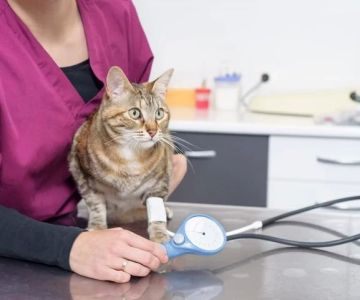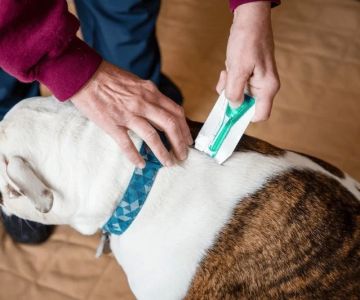How Do I Know If My Pet Has an Ear Infection? Symptoms and Treatment Options
- 1. Common Symptoms of Pet Ear Infections
- 2. Types of Ear Infections in Pets
- 3. Treatment Options for Pet Ear Infections
- 4. Home Remedies for Ear Infections in Pets
- 5. Preventing Ear Infections in Pets
- 6. Real-Life Experiences with Pet Ear Infections
1. Common Symptoms of Pet Ear Infections
Ear infections in pets, whether in dogs or cats, can cause significant discomfort. Recognizing the symptoms early is crucial to prevent the infection from worsening. Some common signs that your pet might have an ear infection include:
- Frequent Scratching or Rubbing of the Ears: Pets with ear infections often try to relieve the discomfort by scratching or rubbing their ears against furniture, the floor, or even their paws.
- Head Tilting or Shaking: Pets may tilt or shake their head in an attempt to alleviate the pain or discomfort caused by the infection.
- Red or Swollen Ears: Infected ears may appear red, inflamed, or swollen, and there may be visible discharge.
- Odor from the Ears: A foul or unusual smell coming from your pet’s ears is a clear indication of infection.
- Excessive Wax or Discharge: An increase in earwax or the presence of pus or other discharges from the ear is a strong signal that an infection may be present.
- Changes in Behavior: Your pet might become more irritable, lethargic, or avoid being touched, especially around the affected ear.
If you notice any of these symptoms, it’s important to consult with a veterinarian promptly to diagnose and treat the infection effectively.
2. Types of Ear Infections in Pets
Ear infections in pets can be caused by several factors, and understanding the type of infection is essential for appropriate treatment. The most common types of ear infections in pets are:
- Otitis Externa: This is the most common type of ear infection, affecting the outer ear canal. It is often caused by bacteria, yeast, or allergens.
- Otitis Media: In this case, the infection spreads to the middle ear, often as a result of untreated otitis externa. This condition is more serious and can cause permanent damage if not treated.
- Otitis Interna: The inner ear infection can lead to balance issues, hearing loss, and significant pain. It is the least common but most severe form of ear infection.
Each type of infection requires specific treatment, and a thorough examination by a veterinarian is essential to determine the right course of action.
3. Treatment Options for Pet Ear Infections
Once your pet is diagnosed with an ear infection, there are several treatment options that a veterinarian may recommend:
- Prescription Ear Drops or Ointments: The most common treatment for ear infections involves the use of ear drops or ointments that contain antibiotics, antifungals, or steroids to treat the infection and reduce inflammation.
- Oral Medications: In more severe cases, oral antibiotics or antifungals may be prescribed to fight the infection from within the body.
- Cleansing the Ears: Veterinarians may recommend cleaning your pet’s ears with a medicated solution to remove excess wax and discharge before applying topical treatments.
- Surgical Intervention: In extreme cases, such as when infections are chronic or cause structural damage to the ear canal, surgery may be necessary to treat the infection and prevent future occurrences.
It’s important to follow your veterinarian’s instructions carefully, especially when it comes to administering medications and cleaning your pet’s ears.
4. Home Remedies for Ear Infections in Pets
While it’s always best to consult with a veterinarian for a professional diagnosis, some pet owners may prefer to try home remedies for mild ear infections. Here are a few options to consider:
- Apple Cider Vinegar: A diluted solution of apple cider vinegar and water can be used to clean your pet's ears and help restore the natural pH balance, which may deter bacterial or yeast infections.
- Coconut Oil: Coconut oil has natural antimicrobial properties and can be gently massaged into the ear canal to soothe irritation and fight infection.
- Aloe Vera Gel: Aloe vera is known for its healing properties and can provide relief from pain and inflammation when applied to the ear flap.
These remedies should only be used in consultation with your veterinarian and are not intended to replace professional treatment. If symptoms persist, seeking professional medical help is critical to your pet’s health.
5. Preventing Ear Infections in Pets
Prevention is always better than treatment when it comes to ear infections. Here are some preventive steps you can take to protect your pet’s ears:
- Regular Ear Cleaning: Clean your pet’s ears regularly with a vet-approved ear cleaner to remove debris, wax, and moisture that can lead to infections.
- Dry Ears After Baths or Swimming: Make sure to dry your pet’s ears thoroughly after baths or swimming to prevent moisture buildup, which can encourage bacterial growth.
- Monitor for Allergies: Allergies can contribute to ear infections, so if your pet suffers from allergies, work with your vet to manage their condition and minimize the risk of infections.
6. Real-Life Experiences with Pet Ear Infections
Many pet owners have had experiences with ear infections in their furry friends. Here are a couple of stories:
- Jane’s Experience with Her Dog, Max: "Max had frequent ear infections due to allergies. After changing his diet and using prescribed ear drops, his infections have become much less frequent. Regular cleaning and monitoring are key to keeping his ears healthy."
- Tom’s Story with His Cat, Bella: "Bella started shaking her head and scratching her ears all the time. The vet diagnosed an ear infection, and after a week of treatment, she was back to her playful self. I now make sure to check her ears regularly to prevent future issues."
If you suspect that your pet has an ear infection, it’s important to consult with a veterinarian to get the right treatment. For expert advice and personalized care, visit Hidden Brook Veterinary today.










